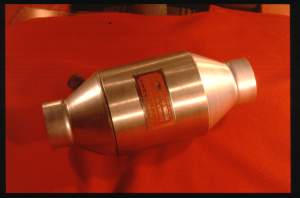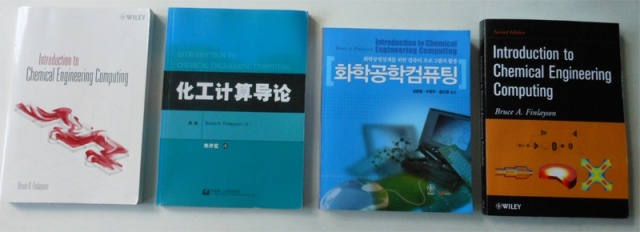
March 3, 2014
I’ve added some more problems to the website www.ChemEComp.com/MWR that goes along with the book pictured above. Now there are six problems, for eigenvalue problems, boundary value problems in 1D, elliptic boundary value problems, and initial value partial differential equations. All of these first six problems have solutions with them, that can be downloaded from the website. They illustrate how variational principles are used to calculate error bounds, or sometimes just trends (always going up or always going down as the approximation improves). See additional description in the Jan. 15th blog below.
I’ve corrected the page proofs for the revision of Introduction to Chemical Engineering Computing. It now is based on Aspen Plus User Interface 8.0, which comes with the Aspen Suite 8.4, the latest one. See the Jan. 15th blog below for further information. The new printing should be in April. If you order it, be sure to specify that the ISBN number is
ISBN 978-1-118-88831-5
After Aspen Tech made the changes in the Aspen Plus User Interface, there are a lot of books being revised!
Hints when the time integration is having difficulty getting started in Comsol Multiphysics. (I supplied these on LinkedIn in response to a query.)
1. If it is natural convection in an enclosed space, be sure you set the pressure at one point on the boundary. Otherwise the pressure will not be defined and the simulation won’t start.
2. Next, if some of your equations are not time dependent, it is possible for Comsol not to take those variables into account when it makes the error estimates in the time step. That is appropriate because those variables would adjust instantly to the others, and might change a lot in one time step. Otherwise you will have to take very small time steps. These problems are called quasi-static. To do this, unclick them in the “Equations to be solved for”.
3. You can set the initial time step to a smaller value. Then, in desperation, you can set the Absolute and/or Relative Tolerance to higher values.
4. Also, it might help, depending on your problem, if you could supply an initial guess of the solution – it doesn’t have to be right, or even close, but something non-zero sometimes helps. Be sure to check the box for Values of Dependent Values Solved for. Good luck – this is a common problem and not easy to solve (in my experience).
5. You can also set the error criterion for the error in a time step (or the changes from one time to another) to a larger value. This is called Scaling; the default is 0.01. For kicks, try something very much larger (like 1 or 10).
6. There are a variety of other options that have not always worked well for me, but they are in the Time-Dependent Solver: increase MUMPS (this has worked for me, under Direct – when you start, it may be changed by the program and listed on the Log or Progress, and if you see it increasing it is easier to just use the larger number when you start),. Also, you can change the way the Jacobian is solved (has never worked for me). Scaling of the variables differently permits you to essentially apply different error criteria to different variables, based on your expectation of which variables are the most important to have correct. This program has lots of options, and it is confusing even to one who has programmed many of them back in the days of FORTRAN. Another one that sometimes works is to clear the solution, clear the Study and recreate the Study. I don’t have to do that often (1/10,000) but it has worked for me (and was suggested by Comsol).
7. Finally, of course, is to send it to Comsol for help. I probably should have recommended that first!







